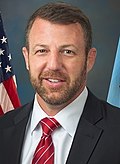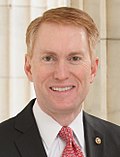A request that this article title be changed to Oklahoma's congressional delegations is under discussion . Please do not move this article until the discussion is closed. |

Map of Oklahoma's congressional districts since 2023
These are tables of congressional delegations from Oklahoma to the United States House of Representatives and the United States Senate.
Contents
- U.S. House of Representatives
- Current members
- 1889–1907: one non-voting delegate
- 1907–1915
- 1915–1963
- 1953–present
- United States Senate
- Key
- See also
- References
The current dean of the Oklahoma delegation is Representative Frank Lucas (R), having served in Congress since 1994.











